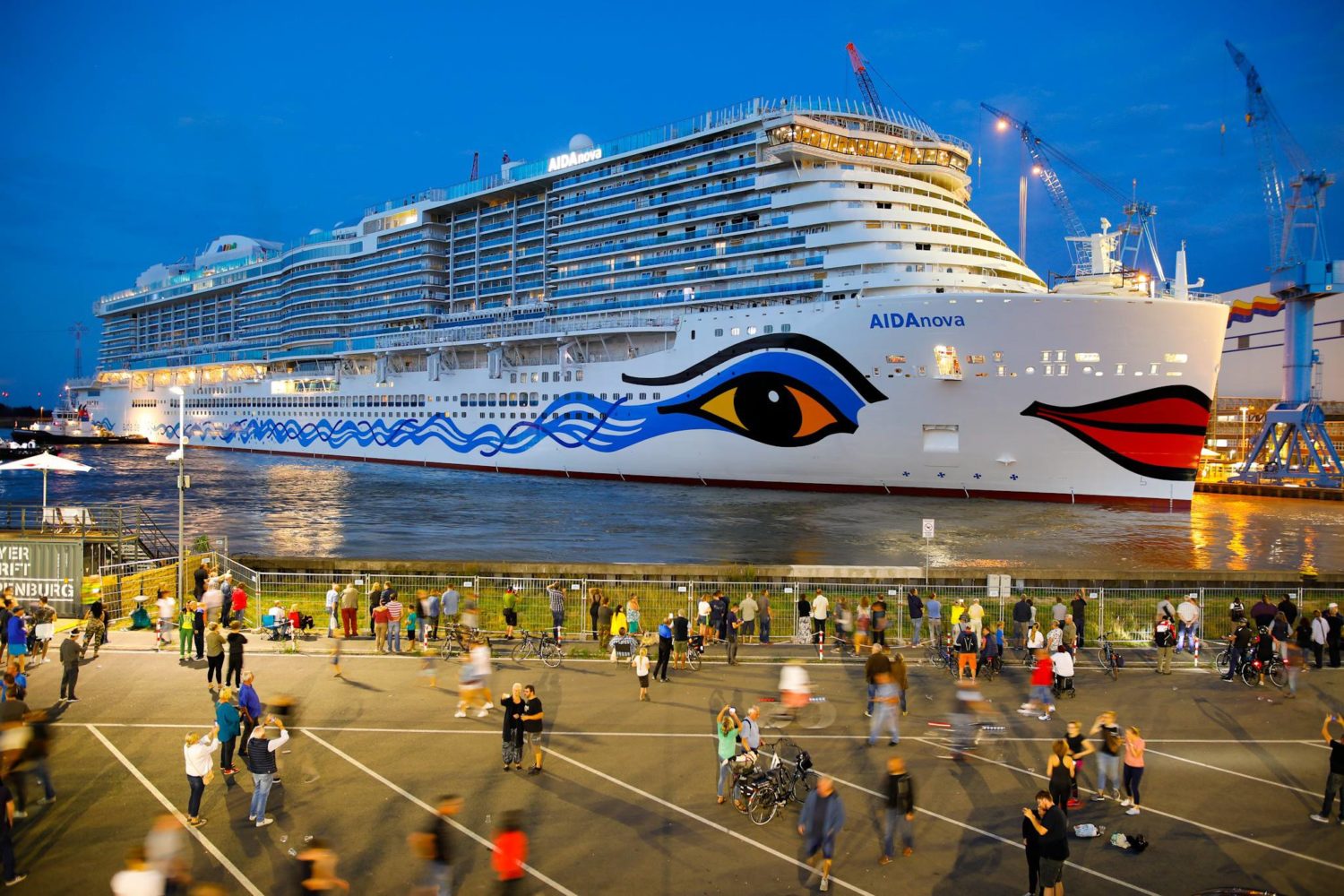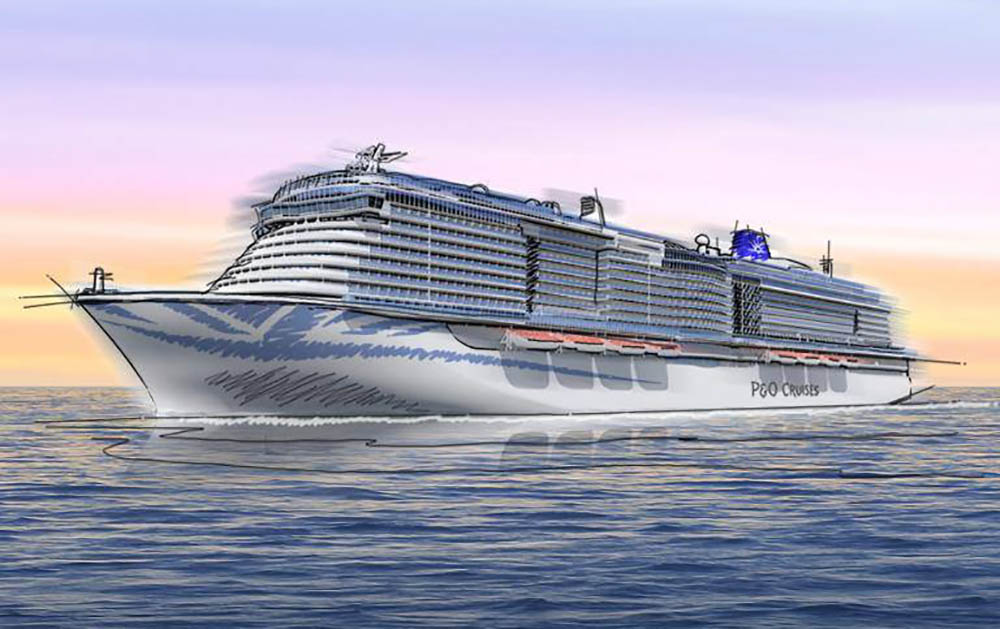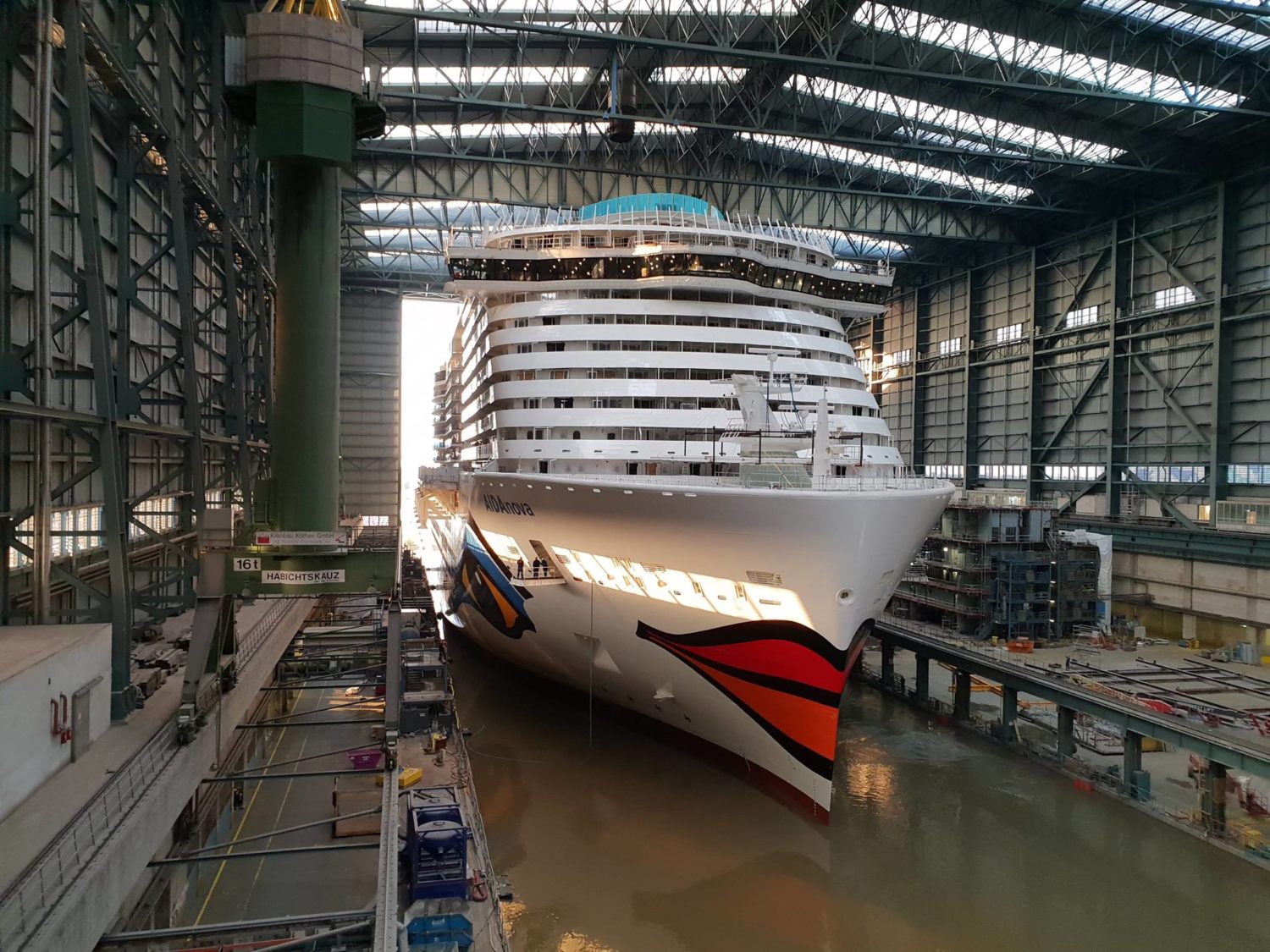
Since cruise ships have been in business, they have been primarily powered by HFO (heavy fuel oil) in diesel engines and MGO (marine gas oil) for gas turbine engines.
There are some locations that put a cap on a ship’s fuel emissions in order to preserve nature (primarily the Arctic regions).
Starting in 2015, cruise lines began looking at better fuel alternatives, one of which is LNG (liquefied natural gas). In the years to come, many other cruise lines have a few LNG-powered cruise ships on order.
What exactly is LNG and why are cruise lines ordering these ships? Let’s find out.
What Is LNG?
Natural gasses pumped from the earth’s core (usually CH4, which is methane) are super cooled to approximately -260°F (126.7°C) and become liquefied natural gas. This enables the gas to be easy to store and transport to various locations.
In its liquefied state, LNG is odorless, colorless, non-toxic, and non-corrosive. As such, it is cheaper to use than gasoline or petroleum. It is easier and cleaner to use in engines, meaning less time is spent on engine maintenance.
It is also far less harmful on the environment when burned in engines. LNG releases absolutely zero sulfur, 99% less particulate emissions (which have been noted as the cause of cancer in some patients), 85% less NOx emissions, and 25% less greenhouse gas emissions.
In fact, in 2011 Honda made a Civic sedan that is powered by LNG. What they discovered was better gas mileage, and lower costs for filling up the tank. Due to lower fuel cost and healthier emissions, they also saw an increase in sales of the LNG-powered Civic.
Benefits or Advantages of LNG

The most notable benefits and advantages of using LNG is cleaner emissions, less wear and tear on the engine, and lower cost. Engines that are designed for and use LNG won’t need to also install scrubber systems or pay high prices for low sulphur fuel.
With cleaner emissions, cruise line companies who have LNG-powered ships in their fleet will also be able to offer more cruise trip options than they could before.
Obstacles to Using LNG
Even with the amazing benefits that LNG provides, there are a few big obstacles that have kept a few companies from switching to LNG.
Specific engine requirements
One deterrent is that LNG can’t be used in just any old gasoline or diesel engine. A vessel needs to be created with a specific type of engine to not only hold as much LNG as possible (to make it more efficient), but to burn it properly.
For example, LNG has a lower fuel density than gas and diesel, so a vessel using LNG needs to have twice as much tank space available. For many cruise ships, increasing their tank space could cost them a cabin or two, which would mean less passengers paying for cruise trips.
Wärtsilä, a global leader in solutions for marine and energy technologies, worked with a French engineering company to design and create a membrane tank that holds enough LNG without sacrificing space. Similar technology has been used in the past on LNG-powered carriers, but this will be the first time it is used on cruise vessels.
We’re not sure if there are going to be plans to have current vessels retro-fitted with LNG-capable engines, but as of right now the only way for a cruise line to use LNG is to buy new ships capable of running the clean fuel alternative.
Lack of fueling depots
Another huge drawback to using LNG is there aren’t enough bunkering (fueling) facilities built yet, so getting an LNG-powered ship re-fueled can be problematic.
Many cruise lines have decided not to order any LNG ships for this exact reason. Though there are plans for more fueling depots to be established for LNG ships, they are still willing to pay extra fuel and maintenance costs simply for the convenience of being able to refuel anywhere they go.
For this reason, some LNG-powered ships are designed to default to the diesel used as pilot fuel if the LNG engines fail, or they run out of fuel and aren’t near any bunkering vessels. Piero Zoglia from Wärtsilä said that having such a system in place to ensure the ship keeps running is essential in the cruise business. Passengers don’t care if there are engine troubles. They paid for this trip and expect to be taken to where they need to go.
As more and more LNG-powered ships are ordered and built, more LNG bunkering vessels and depots will also be set up to facilitate in refueling these LNG-powered ships. Hopefully as the supply reaches the demand, even more cruise lines will be switching to ships with greener fuel options.
What Cruise Lines Are Ordering LNG-Powered Ships?

Carnival Corporation was the first to bite the bullet. Carnival owns AIDA, a cruise line based out of Germany. They currently own two ships that run on LNG while docked (AIDAprima and AIDAperla), and a third ship, AIDAnova, the first cruise ship to run on LNG at port and at sea.
Costa Cruises, also owned by Carnival, will be launching in November of this year Costa Smeralda, the first of Costa’s fleet completely powered by LNG.
Since purchasing these three ships, Carnival has on order ten more LNG-powered cruise ships, all to be delivered anywhere between now and 2026. Two of those 10 are for Costa Cruises, two are for AIDA, and two for Carnival Cruise Line.
MSC Cruises, Disney Cruise Line, Royal Caribbean, and TUI has also risen to the occasion and put on order several LNG-powered ships for their own fleets. Even with the obstacles of using LNG-powered cruise ships, the competition to using sustainable practices to help the environment is strong. As of now, the current order for LNG-powered cruise ships makes up about half of the standard order for cruise ships each year.
Here is a list of every cruise company that has at least one LNG-powered ship on order:
- Carnival Corporation has ten LNG ships on order (Carnival Cruise Line, Princess Cruises, AIDA Cruises, P&O Cruises)
- Hurtigruten, a Norwegian expedition cruise operator, has several LNG-powered ships on order: MS Nord-Norge, MS Nordlys, MDNordkapp, MS Kong Harald, MS Richard With, and MS Polarlys. Hurtigruten also plans to utilize a custom-built bunkering vessel in Bergen to fuel these ships with. The first of the ships on order are planned to set sail in 2020.
- TUI cruises has two 161,000gt LNG vessels on order with Fincantieri, set for delivery in 2024 and 2026.
- Disney originally put in an order for two LNG-powered ships (from shipbuilder Meyer Werft). In July 2017, they added a third ship to the order to further accommodate all the future adventures and experiences they have planned for their guests. All three ships will be 135,000gt with 1,250 guest staterooms each. The ships should be delivered in 2021, 2022, and 2023.
- MSC Cruises signed a memorandum of understanding in June 2017 with STX France for two 200,000gt ships, both of which will be powered by LNG. These mega cruise ships are due to be delivered in 2022 and 2024.
- Royal Caribbean has on order three new ships, LNG-powered, with Meyer Turku. These will be a new class of ships to join the Royal fleet under the name of “Icon”. The first Icon ship will be delivered in 2022, and will accommodate roughly 5,000 passengers each.
- Norwegian Yacht Voyages have four LNG-powered ships on order, the first of which is called “Caroline” and set to be delivered in May 2020. The following three will follow in 18-month intervals.
- Ponant has one LNG cruise vessel on order for 2021, called the Le Commandant Charcot. This is the one to first feature the membrane tank designed by Wärtsilä.
What is the Future of LNG-Powered Cruise Ships?
As restrictions on cruise ship emissions rise, so does each cruise line company’s need to comply with the new regulations if they wish to stay in business.
For now, cruise lines are installing scrubbers in their vessels to significantly lower the sulphur and particulate emissions in order to meet these new restrictions. However, as we mentioned above, that is costly and not as effective as using green fuel.
Many popular cruise lines like AIDA and Costa have already taken the plunge into purchasing LNG-powered ships, and many others have several such ships on order.
As more and more cruise liners see the benefits and advantages to using LNG-powered vessels, more will be added in years to come. The future sees all cruise ships powered by LNG fuel, which will be better for business, the environment, and their guests.
This guest post was written by Justin Stewart.



